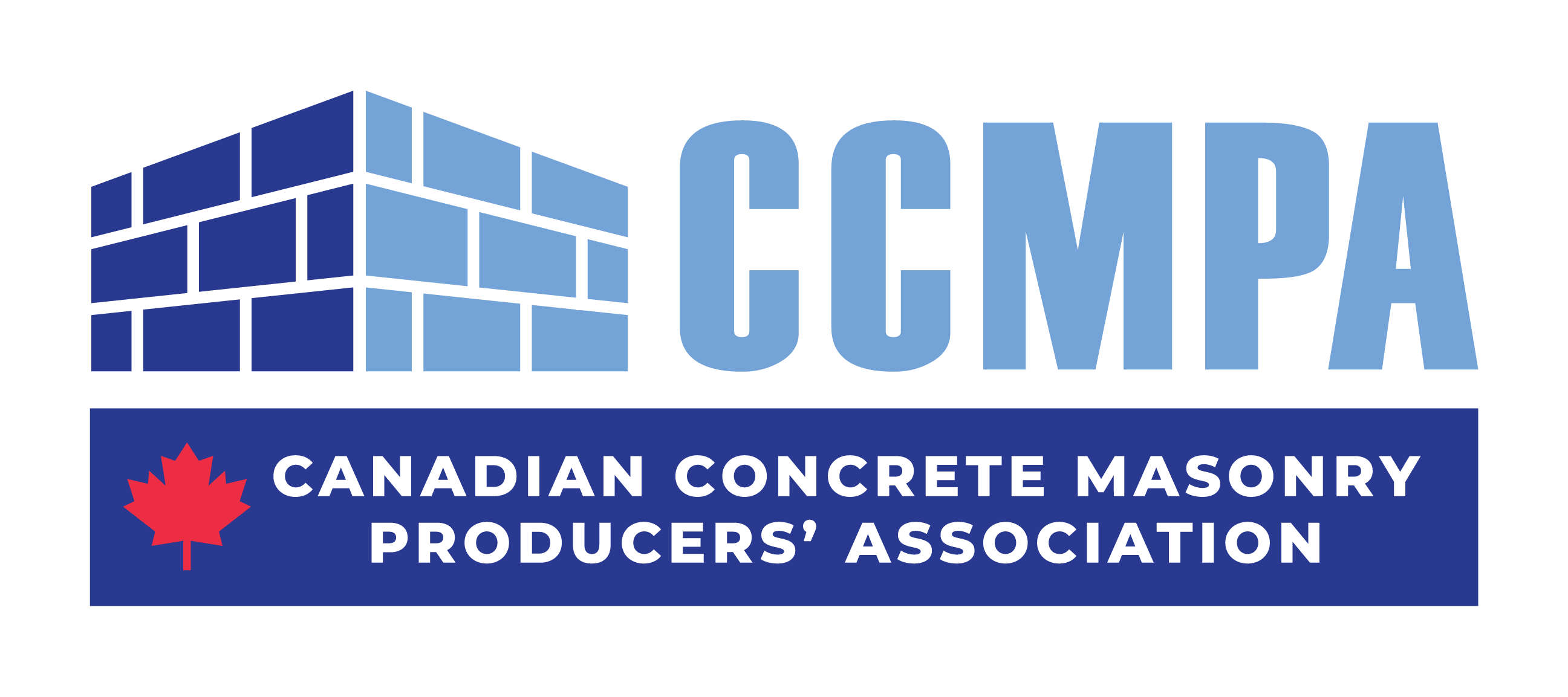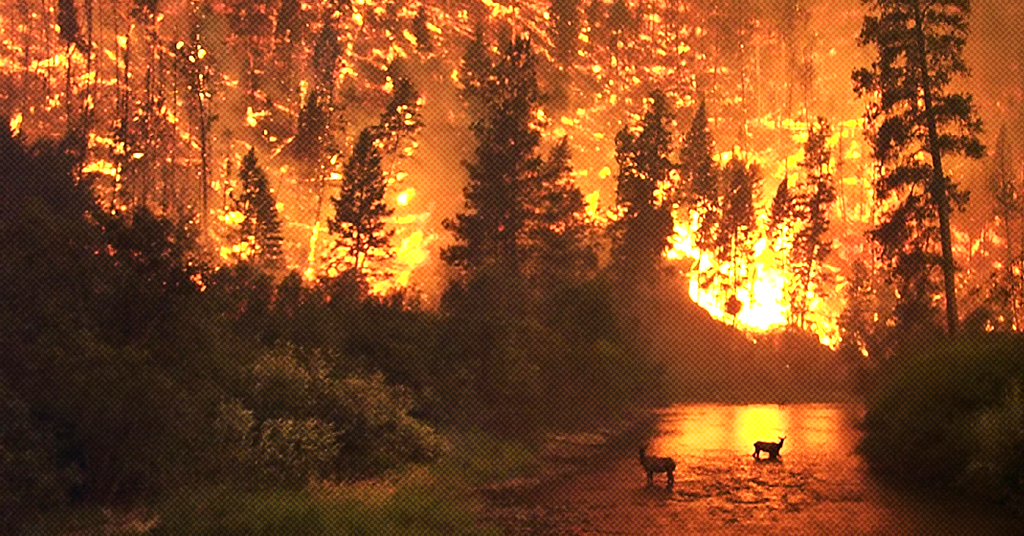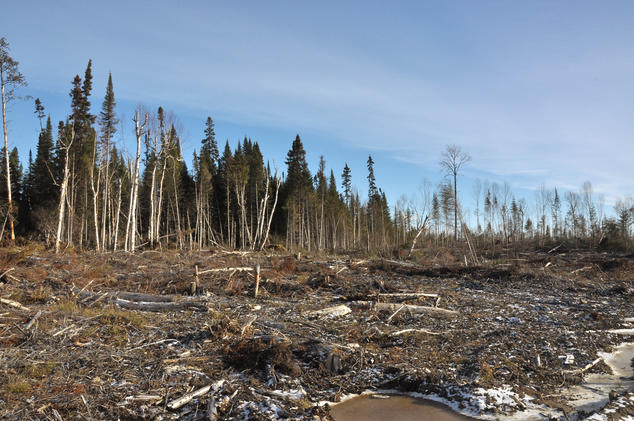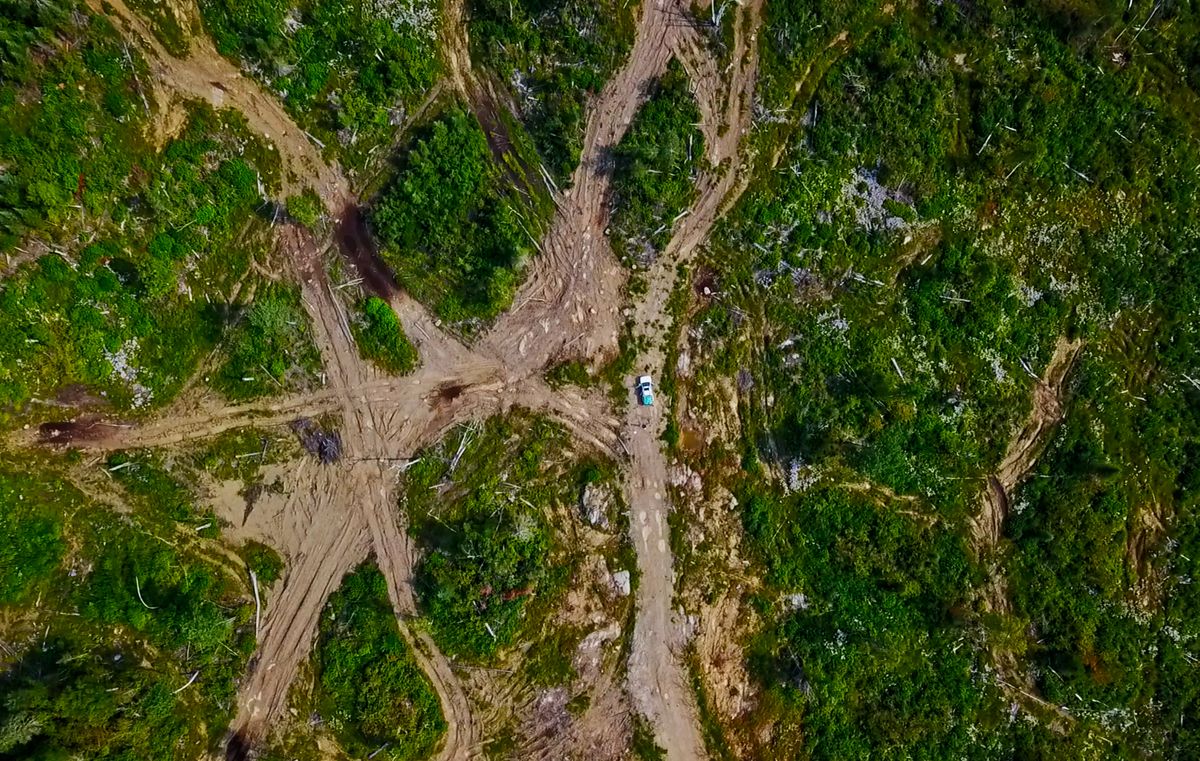Mass Timber: Carbon Accounting Gaps, Capitalism and Catastrophe.
#Blockitout
“Climate change” is a term that has been so over utilized that the entirety of our population has become completely immune to the gravity that it carries. The vast majority of the West Coast of our continent is on fire, and yet we have not paused. Climate change is an intricately complex issue, and each person has a role to play, no matter how small. Further to this thought, activist Greta Thunberg states “we must change almost everything in our current societies. The bigger your carbon footprint, the bigger your moral duty. The bigger your platform, the bigger your responsibility”.
It has been over a year since the world met Greta Thunberg when she made her address at the UN Climate Action Summit, and she still maintains:
“I want you to act as you would in a crisis.
I want you to act as if our house is on fire.
Because it is.”
Alarmingly, Greta’s statement has recently proven prophetic. As of last week, there are 25 wildfires burning in British Columbia alone. On September 18th, 2020 The New York Times reported that “California, Oregon and Washington are enduring a wildfire season of historic proportions. More than two dozen people have died since early September, when powerful winds helped spark fires and propel existing ones, leaving millions of acres charred and thousands of structures destroyed”.
Our house is on fire.
And yet?
The federal and provincial support for the Mass Timber Industry has never been stronger. The Canadian governments continue to pour money into subsidies and grants which support and drive the mass timber industry forward with alarming momentum, but very little accountability or transparency. In fact, it has been stated that every minute, the logging industry fells an area of the Boreal forest the size of seven NHL hockey rinks, with devastating carbon impacts”.
The narrative of the production of Mass Timber often centers around claims of carbon emission reduction, and leveraging an under-utilized, domestic natural resource. However, when one unpacks the supporting rhetoric, several questions arise. Specifically, it can be argued that there is merit in more closely examining the carbon accounting in the Timber equation, understanding the true aims of the Mass Timber campaign, and finally, exposing the true vulnerability of supply for wood.
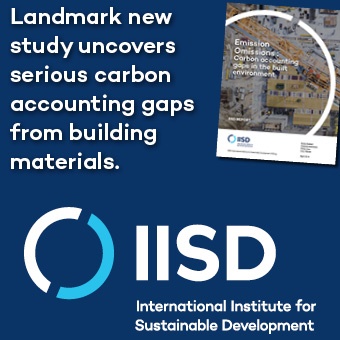
Mass Timber has Multiple Gaps in Carbon Accounting
The increasing popularity and visibility of the Mass Timber market brought to light several questions around the carbon accounting. What is being called a ““logging loophole” is jeopardizing Canada’s global climate commitments, allowing the logging industry to escape scrutiny and regulation for impact on the climate-critical boreal forest. The boreal forest is a global climate linchpin, storing twice as much carbon as the world’s oil reserves […] Canada’s 270 million hectares of boreal forest is part of the most carbon-dense forest biome on the planet. When this forest is logged, it both releases stored carbon from its vegetation and soils and loses its capacity to absorb carbon”.
Compounding the initial cuts in carbon, are the carbon accounting gaps as were examined in the recent study done by the International Institute for Sustainable Development (IISD), Emission Omissions: Carbon accounting gaps in the built environment, (Full study can be found here: https://ccmpa.ca/download/iisd-study/) finds that “life-cycle assessment (LCA) is the right approach to measure carbon emissions, but more data, transparency and robust LCA standards are needed, especially with respect to accounting for biogenic carbon from wood products”. Furthermore, this study finds that “up to 72% of a wood product’s carbon emissions may currently be omitted from wood LCAs and that when these emissions are taken into account, concrete’s embodied carbon footprint could be up to 6% less intensive than that of wood products”.
Mass Timber Spouts a Self-Serving, Singular narrative
Our governments are literally funding the deforestation of our country and compounding the devastation. The recent report “Sustainable Growth: Ontario’s Forest Sector Strategy” by Ministery of Natural Resources and Forestry highlights the below key aims:

Notably, 5/5 of these principles reinforce Forestry as a strategic approach to increase profits and market growth. Inclusions regarding indigenous people, job creation and climate change are clearly secondary and heard only as an echo to the capitalistic aims.
Additionally, the stronghold of the Mass Timber industry is only increasing as it announces the pending completion of Ontario’s first Cross-Laminated Timber manufacturing plant in St. Thomas, Ontario. This $32M operation received almost $5M in government subsidies, yet being completely automated it therefore only created approximately 15 jobs. Estimated to be in production in early 2021. “We believe southern Ontario will become a centre for the Mass Timber Industry, at least in the whole eastern half of North America,” says Patrick Chouinard, Element5’s founder and business development vice-president, adding there are dozens of projects in Ontario in various stages of design and development.
The Ontario Ministry of Natural Resources and Forestry assures that supply is a non-issue, stating “Ontario is utilizing only half of the wood that it could sustainably harvest. Approximately 15 million cubic metres of wood is not being used and could be available for attracting investments in new domestic and international markets. […] Ontario is looking to expanding to new markets for its forest products, while working to strengthen existing businesses”.
The Mass Timber industry has used environmental and humanitarian platforms to gain traction, but have ultimately just highlighted itself as a political powerhouse with profiteering as its main objective.
Mass Timber has Vulnerability of Supply
Not only are the motivations of the Mass Timber industry full of glaring omissions regarding carbon accounting and transparently capitalistic; with the recent devastation of existing timber resources along the West coast, another issue has come to light. Mass Timber is building an industry that is precariously vulnerable to supply elimination.
In general, there seems to be agreement that a certain percentage of Canadian forestry needs to be left intact in order to support the ecological balance. The Mass Timer industry assures us that the various strategic deforestation / reforestation /afforestation plans being executed consider this balance of the utmost importance. The above-mentioned Forest Sector Strategy for Ontario highlights that Canada is comprised of:
- 71.1 million hectares of forest
- 27.7 million hectares of managed Crown forests
- 1.6 million hectares of disturbance area annually (fire, insects, disease, wind throw).
That means there is approximately 45 billion cubic metres of wood in Canada (www.nrcan.gc.ca).
Hypothetically, these statistics suggest that currently only 1.14% of Canada’s forests are subject to annual disturbances. At first glance, this supports a rather large and sustainable margin for the supply and production of Mass Timber nationally. But when the data is examined from a provincial level in a study recently released by Anna Baggio, Director, Conservation Planning for the Wildland League, it is reported “for the first time that approximately 21,700ha are deforested each year in the boreal forest of Ontario which is seven times greater then the reported rate of deforestation for all of Canada (average is approx.. 2800/ha year). This is despite the fact that only 17% of Canada’s logging takes place in that province”.
Wildfires have repeatedly demonstrated the capacity for volatility, unpredictability and speed. In addition to the devastation to human life and well-being, wildfires also have the capability to simultaneously decimate the supply of wood, destabilize the Mass Timber industry and accelerate climate change. While Canada is undeniably fortunate to have such an abundance of forestry, the combination of deforestation (no matter how theoretically sustainable) and wildfires, could prove catastrophic to the carbon climate and eviscerate promises made by the Mass Timber industry. Of the fires in California right now, officials state that “it now takes days, not decades to produce what had once been seen as a once-in-a-lifetime occurrence. Last weekend, a fire burning in California’s Sierra National Forest exploded in size […] fire officials said they’ve never seen a fire move so fast in forestland – 15 miles (24 kilometers) in a day”. Theresa Machemer from Smithsonian Magazine reports that “wildfires in California have burned over 500,000 acres so far this year”. This translates to 202,343HA in 2020 alone. However, in 2018 “about 7,500 fires burned over 1,670,000 acres of land” (675,825HA) in a single state.
This is precisely the type of catastrophic event that Greta Thunberg has been warning us about.
Our house is on fire.
As Canadian citizens, we need to start asking better questions. We need to identify the gaps in the rhetoric that the Mass Timber industry produces and challenge their promises around carbon accounting and climate change. For example, the forestry industry needs to be held accountable to provide the same 3rd party executed and 3rd party verified EPDs and carbon accounting baselines as all other industries.
If the above level of worst-case devastation in California was extrapolated out over Canada’s ten provinces and three territories – what would that do to the above mentioned “over-abundance” of timber that our Ministry outlines in the Sustainable Forest Strategy?
Will there be enough forestry left to maintain and support our current carbon cycle? Or will deforestation continue at the forecasted rate and exponentially compound carbon climate change?
If wildfires continue to consume our forestry at the rate we are seeing along the West Coast, does the Mass Timber industry commit to slow the rate of deforestation (thereby starving market supply) in order to restore the ecological balance that they insist is of the utmost importance? Or will they simply drive along the proposed trajectory, ensuring fulfillment of the capitalistic “key principles” above?
It is undeniable that from a building design perspective, the safest, strongest and most sustainable designs are comprised of various materials- we are stronger together. However, as Canadians we need to ensure due diligence is done on the products being produced and included in these designs. While there is the perception that Canada is abundant in forestry, “Canada ranks 15th out of 17 peer countries for forest cover change over 2005 to 2010 and receives a “B” grade for performance. Canada’s forest cover and wooded area has remained fairly constant over the past two decades”. (Approximately 348 million hectares or 34% of Canada’s total land mass). Canada’s Boreal is not invincible, and it cannot defend itself. All industries need to account for their respective carbon footprints, and their sustainability of supply. The scope, scale and speed of the deforestation in Canada needs to be more closely examined; better questions need to be asked and answered.
We need the Mass Timber Industry to answer the call to Action:
- More accurately account for the logging industry’s emissions, closing the “logging loopholes”; to be held accountable to provide the same 3rd party executed and 3rd party verified EPDs and carbon accounting baselines as all other industries.
- Regulate the logging industry’s emissions by applying the federal carbon price to forestry emissions
- Prioritize Indigenous-led land management, since strong Indigenous land rights are not only critical to Indigenous self-determination but are also correlated with better protections for forest carbon and healthier forest ecosystems, including higher biodiversity.
- Conduct transparent 3rd party studies on the toxicity of the glues used in CLT
Our Boreal cannot defend itself, and therefore we must demand deliverance of the call to action above. The Mass Timber industry owes Canadians transparency and accountability.
On September 21st, 2020 in the Daily Commercial News, Alex Carrick, chief economist of ConstructConnect and CanaData states “It seems like all kinds of things have fallen on us all at once. There is political unrest everywhere, there are climate change issues and wildfires and then there is the not so small matter of the pandemic. It seems almost biblical the way things are going.”
Our house is on fire.
The time to act is now.

Resources:
https://www.conferenceboard.ca/hcp/Details/Environment/forest-cover-change.aspx?AspxAutoDetectCookieSupport=1
https://canada.constructconnect.com/dcn/news/economic/2020/09/canadata-2020-to-tackle-extraordinary-uncertainty-change-in-covid-19-era?ct=t(DCN_2020_09_23)&mc_cid=cfb8c7b604&mc_eid=c50b84e69c
https://www.canadianconsultingengineer.com/buildings/ontario-investing-5m-in-provinces-first-clt-Plant/1003409522/#:~:text=Thomas%2C%20Ont.,first%20fully%2Dautomated%20CLT%20plants.&text=The%20Ontario%20government%20has%20announced,Thomas.
https://files.ontario.ca/mnrf-fid-forest-sector-strategy-en-2020-08-20.pdf
https://globalnews.ca/news/7286199/b-c-wildfire-map-2020/
https://www.nrcan.gc.ca/our-natural-resources/forests-forestry/state-canadas-forests-report/how-much-forest-does-canada-have/indicator-wood-volume/16399
https://www.nytimes.com/interactive/2020/us/fires-map-tracker.html
https://policyoptions.irpp.org/magazines/august-2020/canada-needs-to-close-logging-loophole/
http://rediscoverconcrete.com/en/sustainability/a-better-building-material/concrete-lca-en.html
https://real-leaders.com/greta-thunberg-i-dont-want-your-hope/
https://www.smithsonianmag.com/smart-news/california-more-acres-have-burned-2020-all-2019-180975629/
https://www.theguardian.com/environment/2019/jan/25/our-house-is-on-fire-greta-thunberg16-urges-leaders-to-act-on-climate
https://wildlandsleague.org/news/loggingscars/

Written by:
